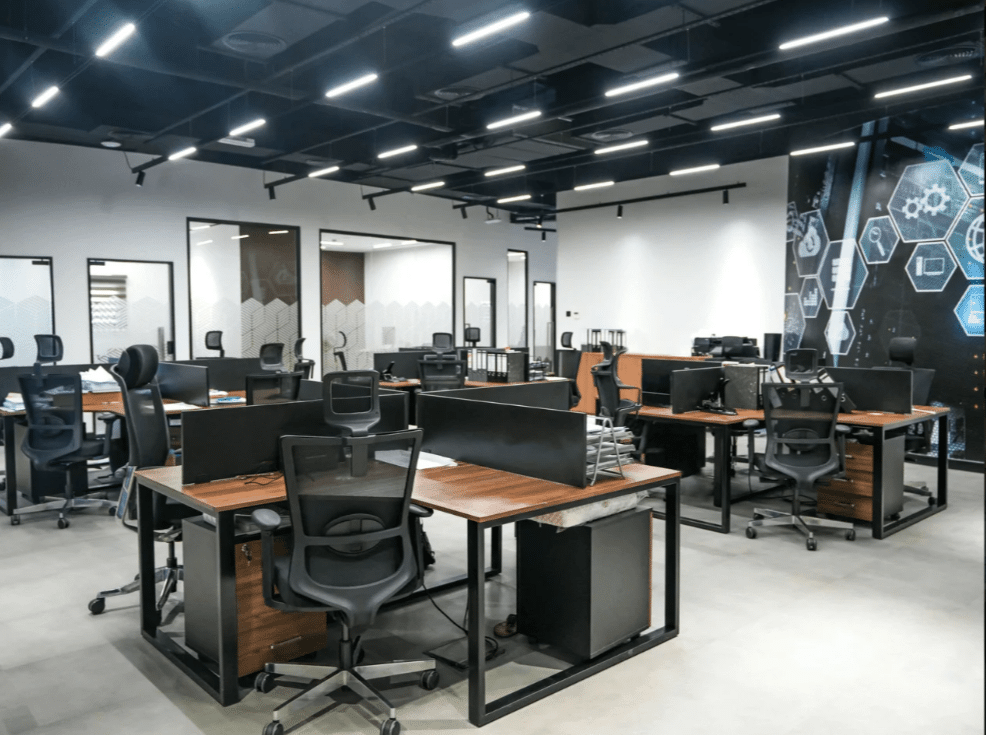Walk into any modern office, and you’ll notice a deliberate effort in design — open layouts, collaborative zones, and sleek aesthetics. Yet, one crucial aspect often goes unnoticed: acoustics. The sound environment of a workspace can make or break employee focus, communication, and well-being. Despite its invisible nature, acoustic design plays a pivotal role in shaping productivity and comfort within contemporary offices.
The Psychology of Sound in Work Environments
Sound directly influences mood, concentration, and even creativity. Research shows that prolonged exposure to unwanted noise increases stress and lowers cognitive performance. In open-plan offices, where conversations and keyboard clicks echo easily, this effect can be amplified.
On the other hand, well-controlled acoustics foster focus and calm. A thoughtfully designed acoustic environment can reduce distractions, allowing employees to immerse themselves in tasks or collaborate freely without disturbing others. In essence, sound is not a background detail — it’s an active part of how people work and interact.
Common Acoustic Challenges in Modern Offices
Modern offices, though visually appealing, often struggle with excessive reverberation and sound leakage. Minimalist designs with hard surfaces like glass, metal, and polished concrete reflect sound rather than absorb it.
Some common challenges include:
- Noise spillover from open-plan areas into private zones
- Echoes in meeting rooms and corridors
- Disruptive cross-talk between workstations
- Insufficient sound masking in collaborative areas
A well-planned fit out company in Dubai understands these nuances and incorporates acoustic solutions from the very beginning of the design process — not as an afterthought.
How Acoustic Design Enhances Productivity
Acoustic comfort directly translates into better performance. A study by the University of California found that workers lose up to 86 minutes of productivity per day due to noise distractions. Effective acoustic design mitigates this loss by improving speech privacy, reducing fatigue, and creating zones for different types of work.
Some practical strategies include:
- Zoning and layout optimisation: Separating collaborative and focus areas helps contain sound.
- Acoustic panels and ceiling baffles: These absorb ambient noise and reduce reverberation.
- Carpets and soft furnishings: Introducing textures and materials that absorb sound softens the overall acoustic profile.
- Sound masking systems: Subtle background noise can be used to neutralise unwanted sounds and maintain privacy.
By integrating these solutions, offices can achieve a balanced soundscape — one that supports both concentration and collaboration.
The Role of Materials and Design Elements
Acoustics are shaped not just by soundproofing materials but by the very geometry and texture of the space. Curved surfaces, soft partitions, and upholstered furniture all play subtle but significant roles.
For instance, acoustic ceiling tiles or felt wall panels can turn an echo-prone room into a calm, focused space. Likewise, sustainable acoustic materials — such as those made from recycled PET felt or natural fibres — combine environmental responsibility with functional design. This balance between form, function, and sustainability is a hallmark of modern workspace design.
Designing for Hybrid Work and Flexibility
Today’s offices must accommodate diverse work modes — from video calls and brainstorming sessions to quiet solo work. The hybrid era has made sound management even more important.
Flexible meeting pods, acoustic booths, and adaptable partitions allow teams to transition smoothly between different work settings. By designing for acoustic agility, workplaces can cater to hybrid work patterns without compromising comfort or efficiency.
The Overlooked Connection: Well-being and Acoustics
Noise pollution is a recognised health concern. Continuous background noise can elevate cortisol levels and trigger fatigue or irritability. A workplace with balanced acoustics supports not only productivity but also mental well-being.
Spaces designed with soft ambient sound, controlled reverberation, and privacy-friendly layouts encourage calmness and focus. Employees in acoustically optimised offices report higher satisfaction and reduced stress — a win for both workers and employers.
Integrating Acoustic Design from the Start
Acoustic planning is most effective when integrated early in the design phase. Collaboration between architects, interior designers, and acoustic consultants ensures that sound management is seamlessly woven into the workspace layout.
Partnering with an experienced office fit out company in Dubai can make all the difference. These professionals understand how to blend aesthetics, materials, and acoustics into a cohesive design that supports both function and comfort. From selecting the right fabrics to designing sound-absorbing ceilings, their role is key in delivering workplaces that sound as good as they look.
The Silent Partner of Productivity
In the grand narrative of office design, acoustics rarely take the spotlight — yet they shape every conversation, every moment of focus, and every collaborative idea. The ideal workspace is not just one that looks good but one that feels good to be in — visually, physically, and sonically.
